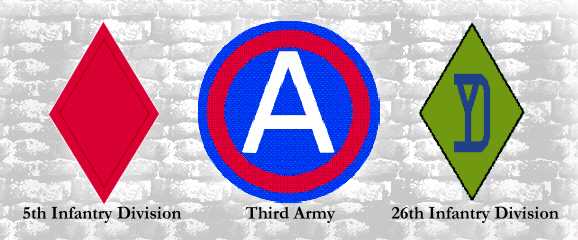Thanks to Mason Carter for providing me with a copy of this article. It appeared in the July 2001 issue of the NATIONAL VETERANS NEWS and is credited as coming from a display at the Fort Jackson Museum, Columbia, SC.
THE HISTORY OF TANK DESTROYER FORCES
In summer 1940, fast, hard-hitting German Panzer forces caused the quick collapse of France and demonstrated the offensive capabilities of the tank. This caused a sense of urgency, and stopping of tanks became one of the most serious problems facing the United States Army.
In November 1941, the War Department ordered activation of a Tank Destroyer Center and Board at Fort Meade, MD.
By the end of 1942, 80 Tank Destroyer Battalions were active and 64 more planned. Known as TD units, these forces were taught to fight tanks with lightly armored vehicles, with mounted cannon, with towed anti-tank guns and as dismounted tank hunting parties using anti tank grenades.
Initially, a TD battalion was armed with half-tracks with 75 mm guns. Combat experience in North Africa, however, was unfavorable. The high silhouette of the halftrack led to the preference of towed guns that could be more easily hidden. As a result, many self propelled TD units in the US were then converted to towed gun units. Following requests from combat theater commanders, half the battalions were converted back to self propelled units. They were armed with the full track M-10 "Wolverine" Tank Destroyer carrying a three inch cannon. As enemy armor increased, tank destroyers also improved. The M-18 "Hellcat", carrying a higher velocity 76 mm gun, was developed, and later the M-36 "Jackson", mounting a 90 mm gun was used. Some versions of the M-36 consisted of the M-36 turret, mounted on the M-4 Sherman tank chassis, known as the M-36B1.
Tank Destroyer units were fast, hard hitting units and were among the most heavily armed and mechanized units in the Army. A Tank Destroyer Gun company consisted of a command post, maintenance section and three gun platoons. The gun platoon was divided into two sections of two tank destroyers and a security section in an M-20 armored car.
Tank Destroyers were extremely vulnerable due to their open topped turrets which provided no crew protection from snipers or air burst artillery. In addition, tank destroyers, unlike tanks, had no machine gun-mounted coaxial with the main gun for defense. Tank Destroyers, although resembling tanks, were very lightly armored and not suited for a tank vs. tank battle. The basic concept and design of the tank destroyer sacrificed armor for speed and agility.
Tank Destroyer units were individual, specialized units attached to larger units for tank defense and had no direct commander. Many losses and casualties suffered by TD units were the result of commanders using tank destroyers as tanks.
Nevertheless, Tank Destroyer units with their "Seek, Strike, Destroy" motto became powerful formations strong in firepower and mobility, and the TD men were renowned for their courage and tenacity.
Initially, 222 TD units were mobilized in 1942. Since massed armor used in early 1940, was rarely used after 1943, the number was reduced. Due to personnel shortages, additional battalions were inactivated and re-designated self-propelled artillery, tank, and quartermaster, or used as infantry replacements. In 1944, only 78 tank destroyer battalions remained.
In late 1945, it was determined that the best defense against a tank was another tank and the Tank Destroyer Force was disbanded. Tank Destroyer units were converted to tank or towed artillery units.
Tank Destroyer units hold a high place in military history. Although out-gunned, under-armored, and misused in many ways, they took a high toll of enemy tanks and many other combat vehicles on all fronts. After action reports from most tank destroyer units at the end of World War II indicated over 2,600 enemy tanks and other armored vehicles were destroyed by TD units. An impressive tally of enemy anti tank guns, armored cars and half tracks, pill boxes, machine guns and aircraft shot down by tank destroyer forces showed that in spite of their severe limitations, tank destroyer forces performed their primary mission well.








